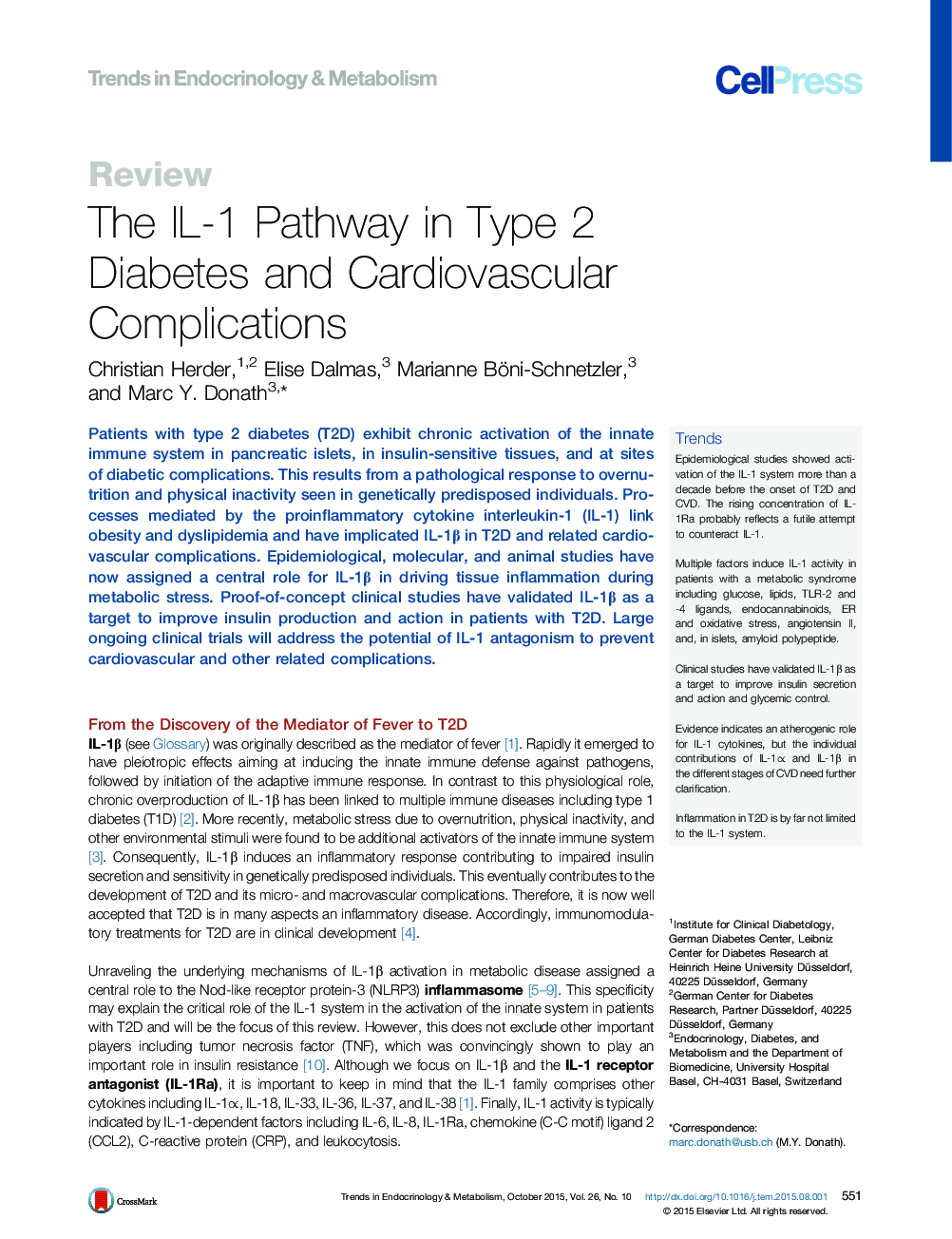| کد مقاله | کد نشریه | سال انتشار | مقاله انگلیسی | نسخه تمام متن |
|---|---|---|---|---|
| 2810164 | 1158411 | 2015 | 13 صفحه PDF | دانلود رایگان |

Patients with type 2 diabetes (T2D) exhibit chronic activation of the innate immune system in pancreatic islets, in insulin-sensitive tissues, and at sites of diabetic complications. This results from a pathological response to overnutrition and physical inactivity seen in genetically predisposed individuals. Processes mediated by the proinflammatory cytokine interleukin-1 (IL-1) link obesity and dyslipidemia and have implicated IL-1β in T2D and related cardiovascular complications. Epidemiological, molecular, and animal studies have now assigned a central role for IL-1β in driving tissue inflammation during metabolic stress. Proof-of-concept clinical studies have validated IL-1β as a target to improve insulin production and action in patients with T2D. Large ongoing clinical trials will address the potential of IL-1 antagonism to prevent cardiovascular and other related complications.
TrendsEpidemiological studies showed activation of the IL-1 system more than a decade before the onset of T2D and CVD. The rising concentration of IL-1Ra probably reflects a futile attempt to counteract IL-1.Multiple factors induce IL-1 activity in patients with a metabolic syndrome including glucose, lipids, TLR-2 and -4 ligands, endocannabinoids, ER and oxidative stress, angiotensin II, and, in islets, amyloid polypeptide.Clinical studies have validated IL-1β as a target to improve insulin secretion and action and glycemic control.Evidence indicates an atherogenic role for IL-1 cytokines, but the individual contributions of IL-1α and IL-1β in the different stages of CVD need further clarification.Inflammation in T2D is by far not limited to the IL-1 system.
Journal: - Volume 26, Issue 10, October 2015, Pages 551–563